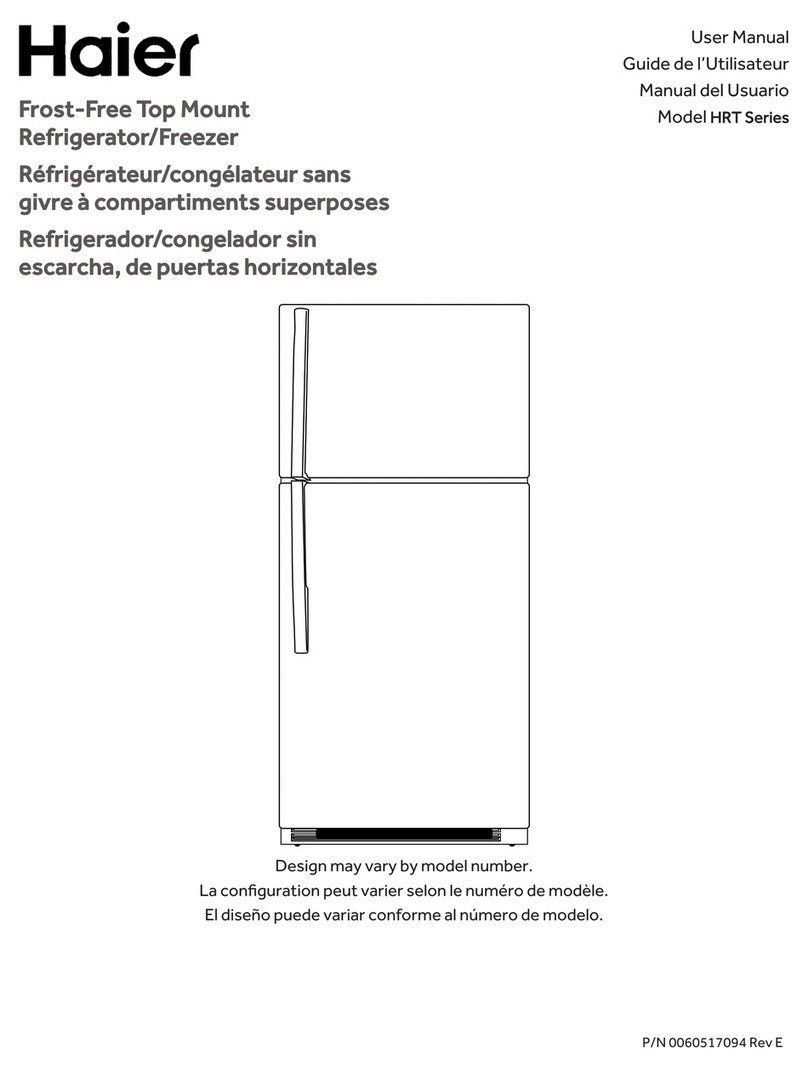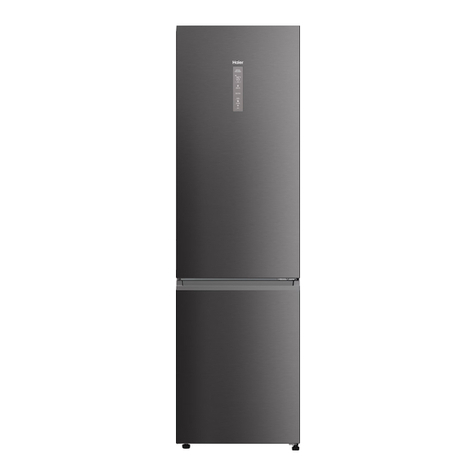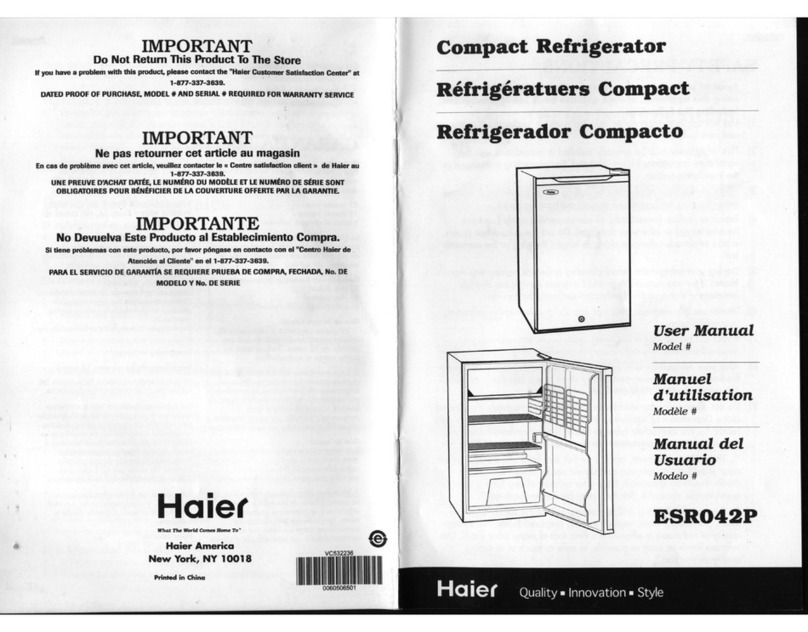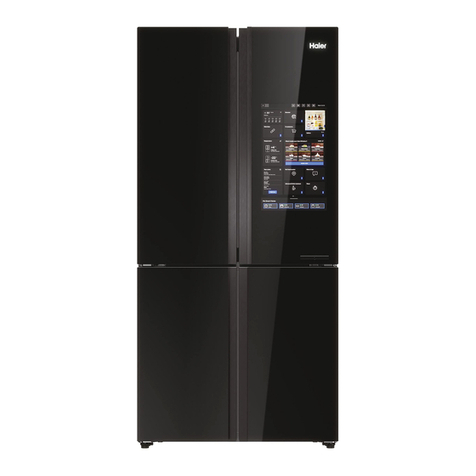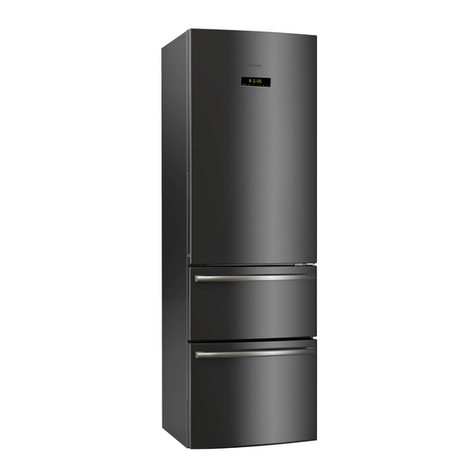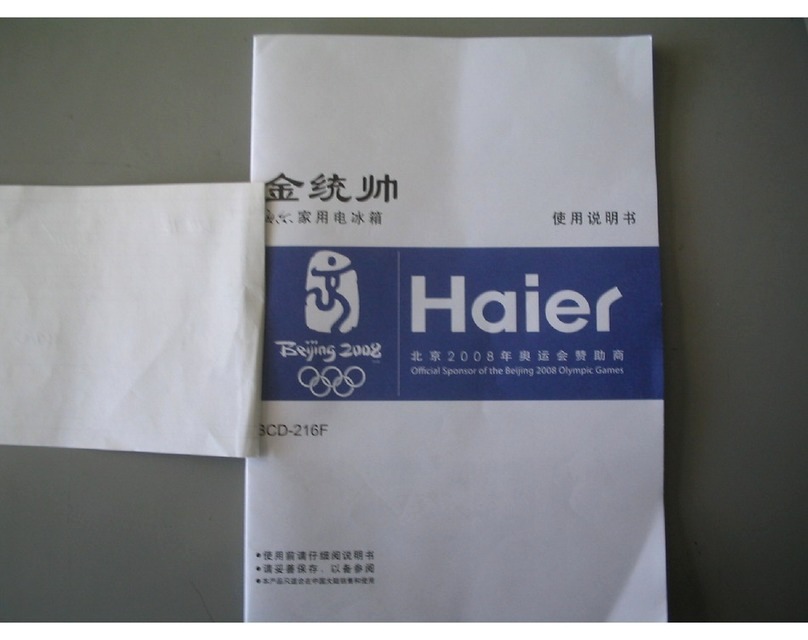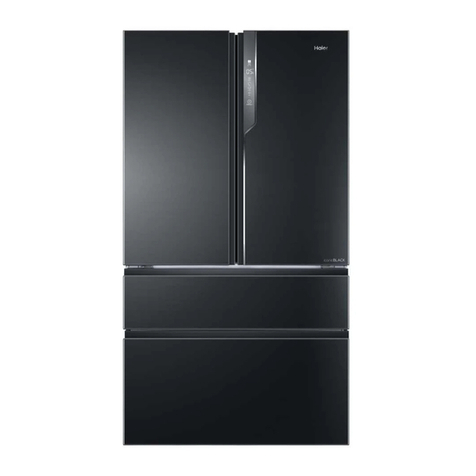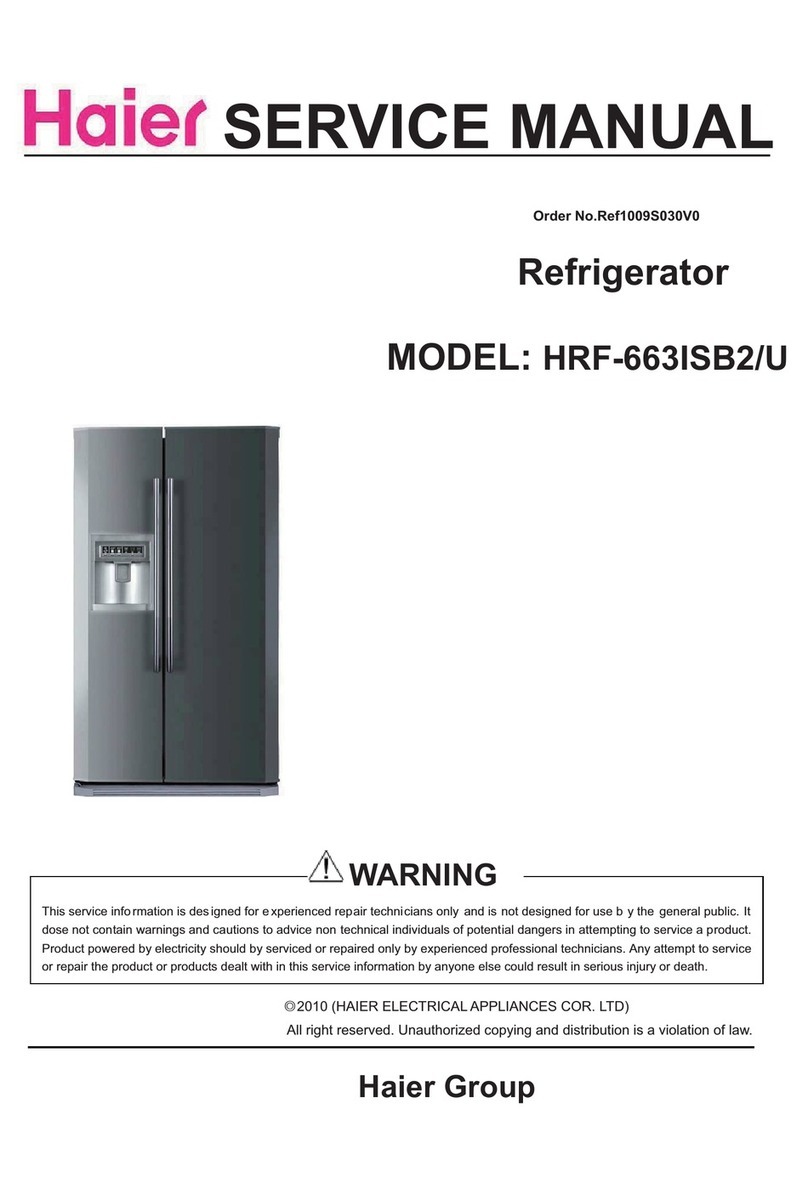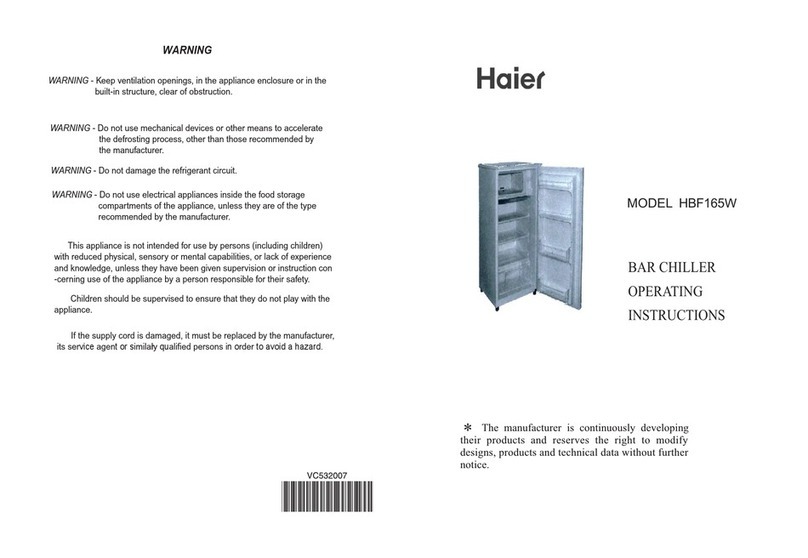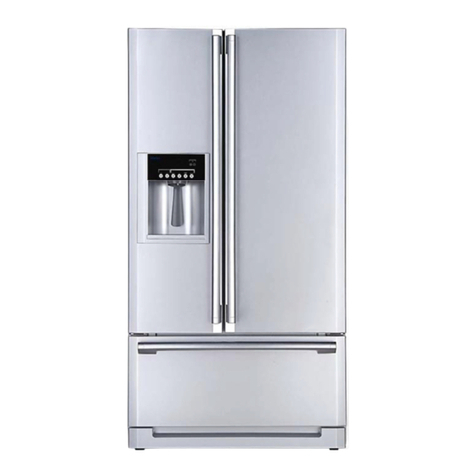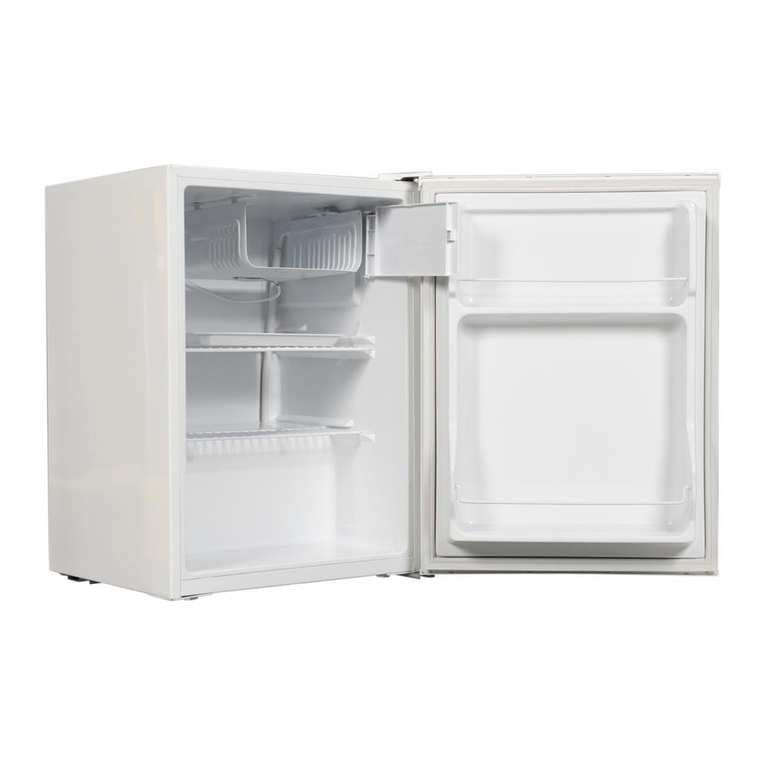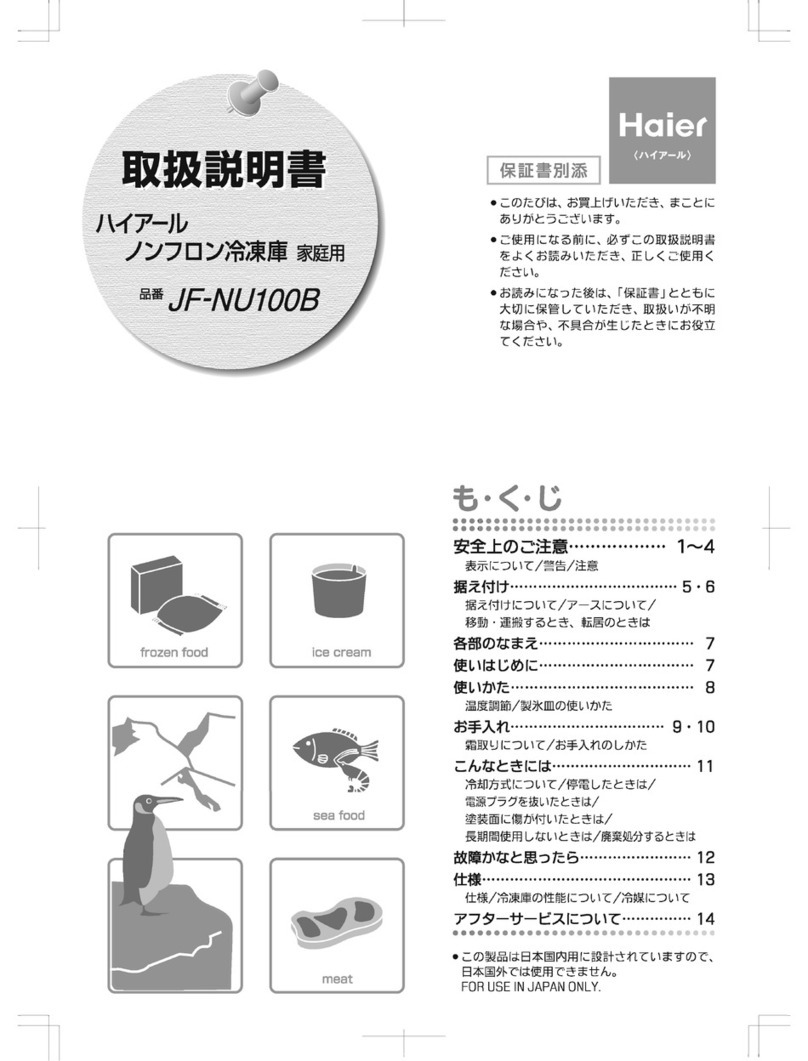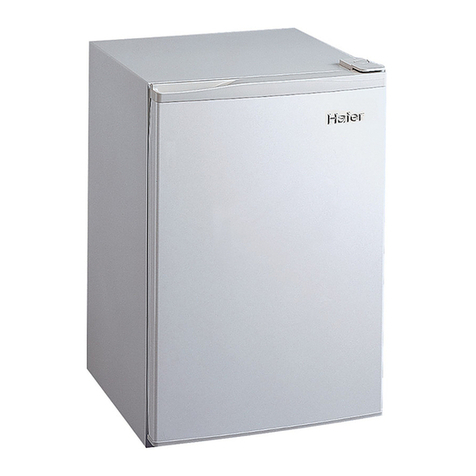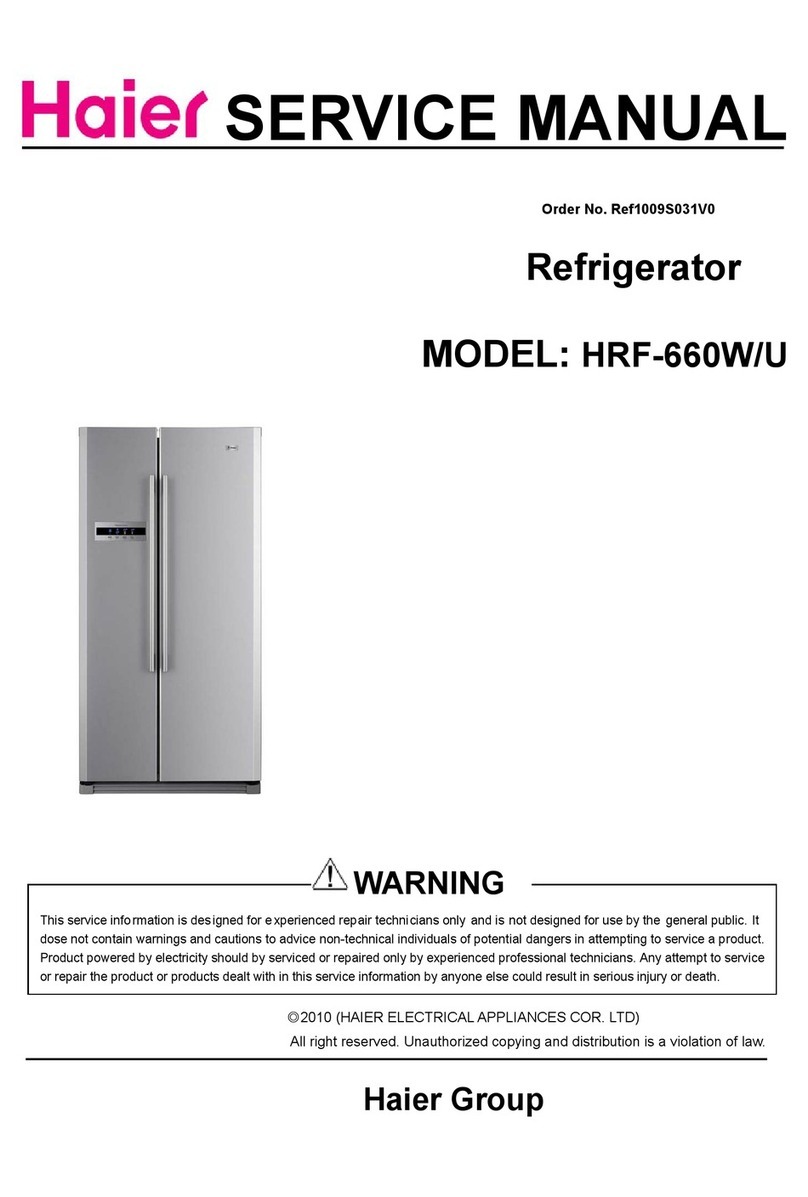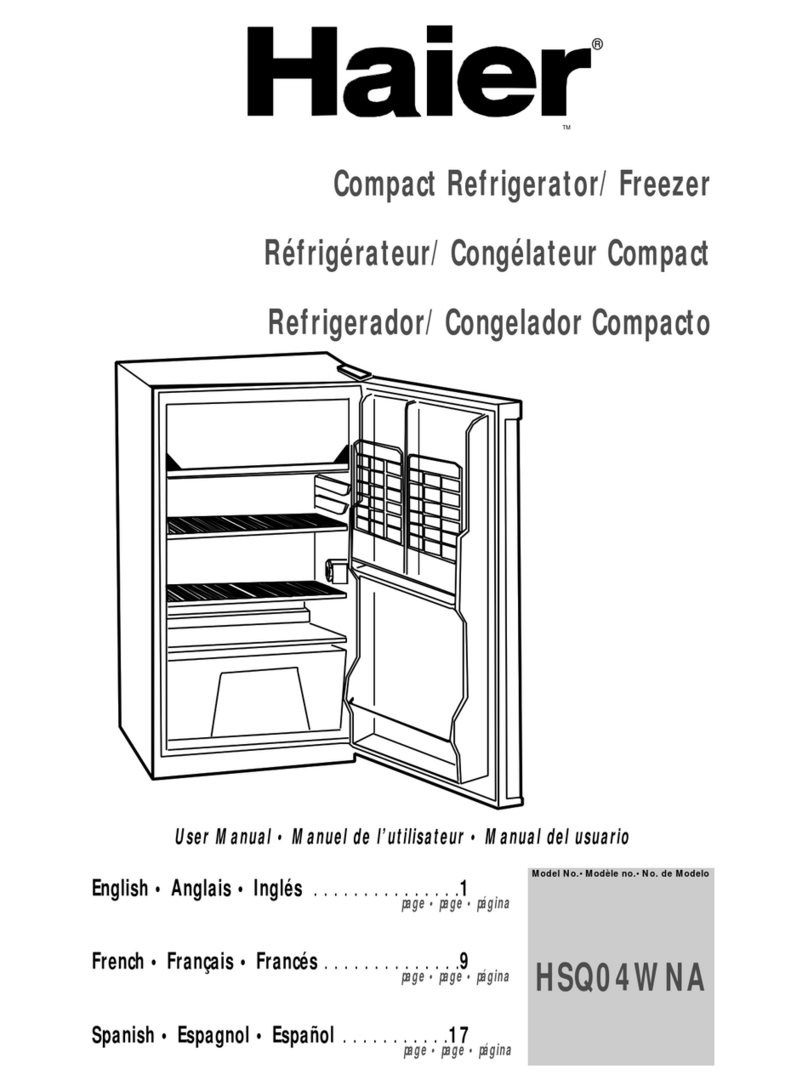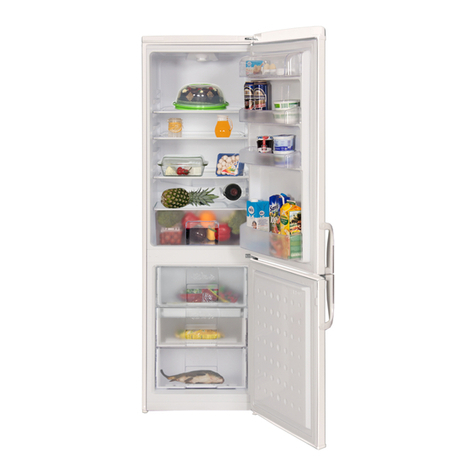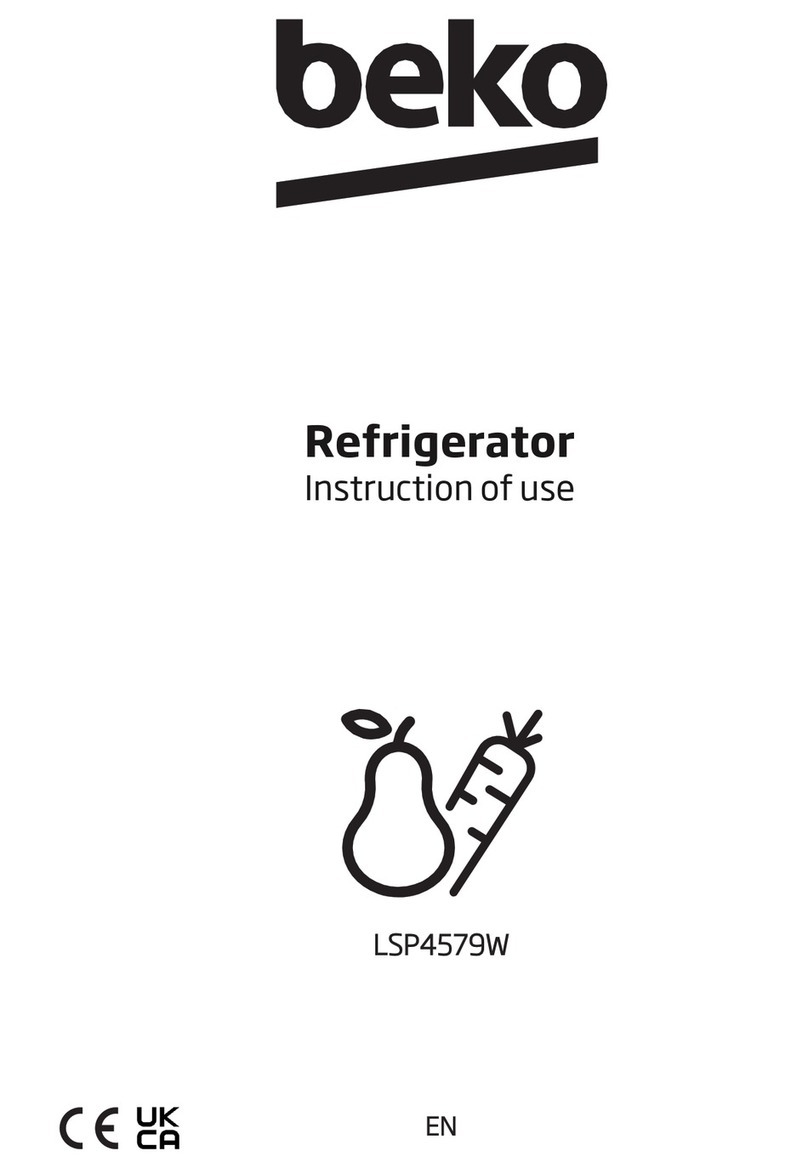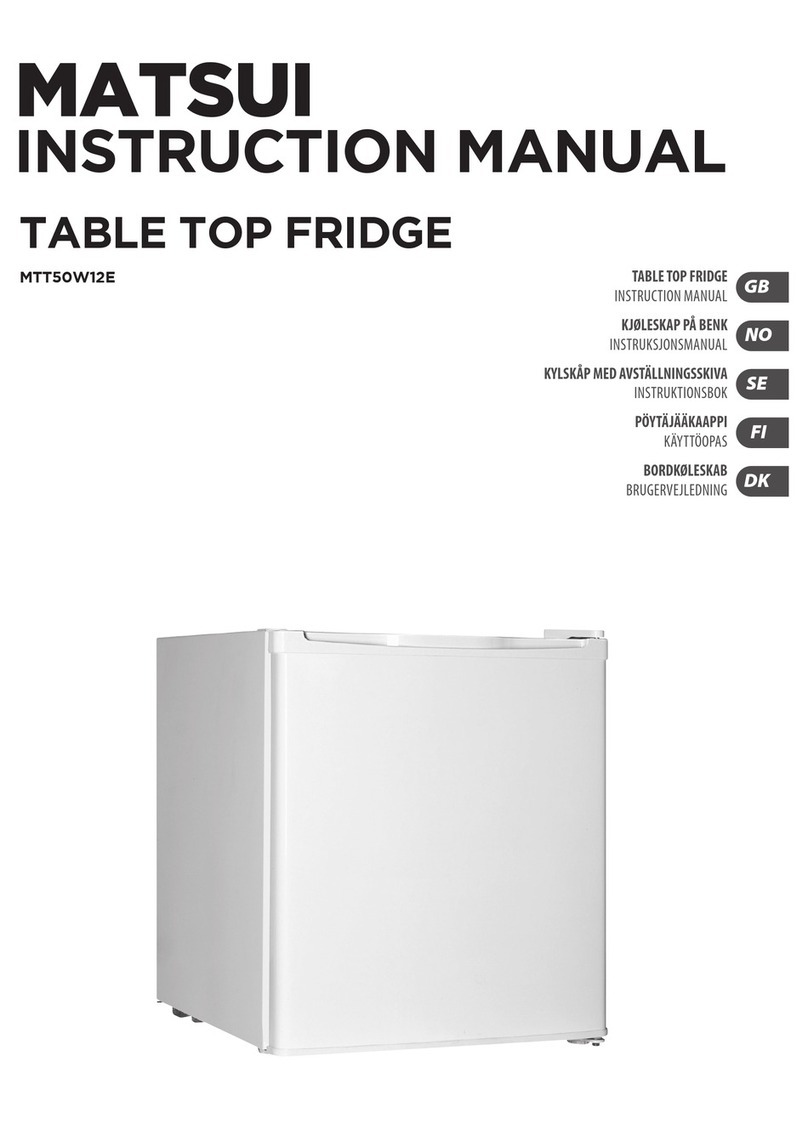
1
TABLE OF CONTENTS
REFRIGERATOR SAFETY .....................................................................................2
PARTS AND FEATURES .......................................................................................5
INSTALLATION REQUIREMENTS.........................................................................6
Location Requirements.................................................................................................6
Electrical Requirements ................................................................................................7
REFRIGERATOR INSTALLATION ..........................................................................8
Step 1 - Unpack Refrigerator ........................................................................................ 8
Step 2 - Level Refrigerator ............................................................................................ 9
Step 3 - Align Door (If Necessary).................................................................................9
Step 4 - Complete the Installation..............................................................................10
REFRIGERATOR USE.......................................................................................... 10
Control .........................................................................................................................10
Refrigerator Compartment.........................................................................................11
Freezer Compartment.................................................................................................12
REFRIGERATOR CARE ....................................................................................... 12
Cleaning .......................................................................................................................12
Defrosting and Draining ..............................................................................................14
Light Bulb .....................................................................................................................15
Power Interruptions ....................................................................................................15
Vacation and Moving ...................................................................................................16
Reinstalling/Using Refrigerator Again ........................................................................16
TROUBLESHOOTING........................................................................................ 17
LIMITED WARRANTY ........................................................................................ 19
RECORD KEEPING
Thank you for purchasing this Haier
product. This user manual will help you
get the best performance from your
new refrigerator.
For future reference, record the model
number, serial number, and the date
of purchase. The model/serial number
plate is located on a label inside the
refrigerator.
Staple your proof of purchase to this
manual to aid in obtaining warranty
service if needed.
___________________________________
Model number
___________________________________
Serial number
___________________________________
Date of purchase

